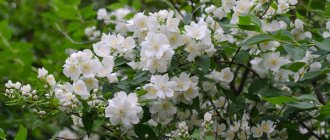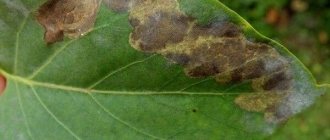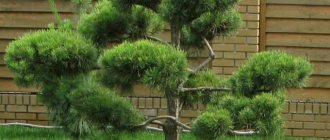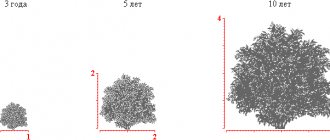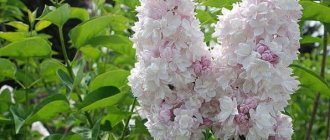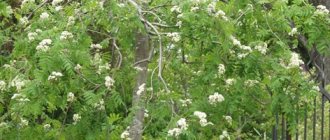Lilac can be found in almost every flower bed, because this unpretentious shrub is highly decorative, and its lush, fragrant inflorescences will decorate any garden. But to preserve these qualities, it is necessary to regularly prune lilacs, both to form a crown of the correct shape and to rejuvenate old plants.
This article describes in detail the technique of carrying out the procedure depending on the season and age of the bush. You will learn how to properly remove lilac branches in spring and autumn, and what activities need to be carried out before and after flowering, and photos and videos will help you master the skills necessary to carry out the procedure.
- Annual pruning
- Annual pruning
When and how to prune lilacs
It is necessary to remove old branches or excess shoots from the bush, since otherwise the flowers will cover mainly the upper part of the plant, and its decorativeness will decrease.
It is important to choose the right time for the procedure. Spring is not a good time for crown formation, as the stress of pruning can reduce or stop flowering that year. Therefore, it is better to postpone the procedure until after flowering or autumn.
However, this does not mean that plants do not need attention in the spring. Before the buds awaken, you need to carry out sanitary cleaning: remove all dry or damaged branches, as well as shoots with signs of disease. This will help maintain the health of the bush throughout the growing season.
Trimming schemes
There are several schemes for pruning this shrub. One of them is aimed at forming the crown, and the second is aimed at rejuvenating the old plant. Let's look at each of them in more detail.
To form a crown you need to do the following:
- Wait until flowering is complete and remove all faded buds;
- Long branches must be shortened by a third;
- Remove all excess root growth and thin out shoots growing close to the ground.
If the bush has become too wide, it is necessary to additionally remove weak and thin side shoots. As a result, you should get a compact plant with a rounded crown. It is better to carry out this procedure after flowering, and not in the spring, so that the bush does not weaken and can form buds (Figure 1).
Figure 1. Classic scheme for the formation and rejuvenation of a bush
In the case of old shrubs that require rejuvenation, they act differently. Without exception, all branches are shortened so that their length from the surface of the ground does not exceed 40 cm. Shoots located near the surface of the ground are thinned out or completely removed (if the branch is old). If you are not interested in flowering this year, rejuvenation can be done in early spring, otherwise pruning is done after flowering is complete.
In fact, after rejuvenation, the bush will not look very attractive, since only small stumps will remain on it. But after 2-3 years it will be overgrown with young shoots and again covered with lush inflorescences.
Required Tools
To carry out the procedure, you will need a standard gardener's kit: pruning shears for removing young shoots and thin branches, a hacksaw for cutting large diameter parts, as well as garden varnish or oil paint for treating the resulting wounds.
It is important that all instruments are clean, sharp and disinfected. Otherwise, an infection may get into the cut, which can destroy the plant.
Haircut rules
To work you will need a set of gardening tools:
- pruner;
- gardening scissors;
- penknife;
- electrical tape, resin or garden pitch;
- twine;
- gloves.
At the initial stage, a visual diagnosis of the bush is carried out. Trunks, branches and shoots that will subsequently be cut off are noted. At the same time, you need to remember that you cannot remove more than 20% of the crown at a time.
What mistakes beginner gardeners make are discussed in the video.
Too long branches are shortened first by 2/4. The cut is made at an angle of 45% and covered with garden varnish to prevent infections from penetrating under the bark. After this, the bush is thinned out to remove wilted, deformed and broken branches. They are cut to the very base of the trunk. Bare areas are wrapped with electrical tape or agrofibre.
When working with intertwined branches and closely spaced trunks, use twine. With its help, parts of the crown are fixed in such a way that individual shoots do not interfere with the gardener’s work. The trunks are cut to a stump, i.e. at the very base, the wound is covered with garden varnish. If the volume of cut material does not exceed 15% of the total mass of the crown, gardeners begin pinching out weak branches and young growth.
After the procedure is completed, the twine is cut off, and the crown takes on its previous appearance. The cut material must be disposed of immediately. Branches thrown near a bush provoke the development of putrefactive processes.
209
Pruning lilacs in spring: forming a bush and its rejuvenation
Despite the fact that in the spring it is not customary to carry out the formation and rejuvenation of lilacs, it is still worth carrying out some manipulations with the plant.
Note: Until the buds awaken, it is much easier to remove excess growth. Such thin shoots will not bring any benefit to the plant: they will make the crown too thick, but will not be able to form buds, so it is better to remove all such branches immediately.
Rejuvenation has no strict contraindications regarding timing. As a rule, such pruning is required for old bushes that gradually reduce or stop flowering altogether. In this case, they use the scheme described above: all thin branches are removed, and large ones are greatly shortened. In the first year after this procedure, the lilac will not bloom, but in the future you will get a lush and beautiful bush with a large number of buds.
Annual pruning
If you want to form a beautiful and compact bush, be prepared for the fact that you will have to remove young shoots every year. In fact, it is pinching that preserves the strength of the plant and is carried out by removing young branches before the first branching (Figure 2). For this purpose, you can use regular pruning shears or small garden shears.
Figure 2. Pruning shrubs by age
This procedure allows you to stimulate the growth of side branches and helps maintain the harmony of the crown.
Bush thinning
The young crop grows very quickly, and without regular thinning the bush will turn out to be too lush and shapeless.
Note: Since this activity does not involve removing a large number of branches, it can be carried out in early spring.
To properly thin out the crown, first of all, cut out all dry or frozen parts. Next, weak shoots are removed that are not capable of forming flower buds, but at the same time they consume the juices of the plant and weaken it. In addition, you need to cut off the branches growing inside the crown. This arrangement leads to the fact that the buds do not receive enough sunlight and do not bloom.
Also in the process, the root shoots are completely cut out, especially for grafted plants. If this is not done, wild branches will form at the roots, which will only weaken the plant, but will not bring flowering. However, moderation and caution should be observed during pruning: no more than a third of the total number of branches can be removed at a time.
Lilac rejuvenation
The main difference between anti-aging pruning and other types is that it involves severe thinning of the bush. At first glance, this procedure may seem dangerous, but in fact it will allow you to enjoy the flowering of old lilacs for several more years.
After this procedure, only stumps remain from the previously lush bush. But there is no need to fear that the plant will die: gradually young flowering shoots will form in place of the old branches.
Note: There is a definite difference between the rejuvenation of grafted and self-rooted varieties. Under no circumstances should grafted plants be cut below the grafting site. This will lead to the fact that instead of a beautiful ornamental bush, you will have an ordinary wild shrub growing.
When rejuvenating the plant, you should not regret that there will be no flowering this year. In early spring, before the movement of sap in the branches begins, all old shoots are removed, leaving no more than 40 cm of them. Old shoots with cracked bark can be cut to the ground. Naturally, after such a procedure there is no point in expecting flowering. But after 2-3 years the plant will fully recover and will delight you with its flowering for several more years.
Conclusion
An important procedure in caring for lilacs is pruning. It helps regulate the growth of the bush by getting rid of old branches that waste nutrients. You can also change the shape of lilacs using pruning. You can get either an ordinary bush or a beautiful tree. Pruning will help rejuvenate the lilac.
It is better to carry out this procedure in the spring - before and after flowering. You can prune lilacs in the fall, but then there is a risk that it will not bloom this season.
It is extremely important to treat the cut site so that the bush is not attacked by viruses.
Pruning lilacs in autumn
Despite the fact that the formation of the crown is most often carried out immediately after flowering has completed, that is, in the summer, in the fall it is also necessary to carry out similar events. Their main goal is to slightly rejuvenate the shrub, prepare it for wintering and strengthen it for the future growing season.
Since lilacs tolerate autumn pruning much better than spring pruning, during this period it is possible not only to thin out and rejuvenate the shrub, but also to more carefully shape its crown.
Annual pruning
For abundant and long-lasting flowering, you need to inspect the bushes every autumn in order to carry out sanitary cleaning in a timely manner. First of all, remove all old branches covered with lichen or with cracked bark.
It is also necessary to remove crooked or broken shoots, as well as those that grow inside the crown and thicken it. Alignment in height is also a prerequisite. This procedure cannot be carried out in spring, since severe shortening can stop the development of flower buds. In the fall, such an event will not cause harm; rather, on the contrary, it will improve the wintering of the bush.
Particular attention should be paid to grafted seedlings: all excess growth is removed from them, which thickens the crown and prevents the formation of varietal buds.
Bush thinning
Thinning helps to form a certain crown shape. However, it should be borne in mind that this procedure begins to be carried out no earlier than the third year of the bush’s life. Otherwise, the plant may become too weak and die.
Figure 3. Formation of the bush crown
You can form a lilac in the form of a bush or tree (trunk). In the first case, only 3-4 strong branches are left, extending from the trunk at a suitable angle. In the future, the main goal is to thin the crown. In other words, all shoots that thicken the crown or interfere with the growth of other branches should be removed (Figure 3).
When forming a standard form, care should be taken, since a culture of this type is very vulnerable. First of all, you need to trim the shoots very carefully so as not to accidentally damage the bark or healthy branches. In addition, you need to carefully examine the tree and remove only those parts that violate its symmetry.
Rejuvenating lilacs in autumn
Over the years, a situation may occur where the shrub still remains lush, but its flowering is significantly reduced. This means that the plant needs rejuvenation. This is a rather radical procedure, after which the lilac will not look very attractive. However, it is necessary for the formation of young and strong shoots.
For rejuvenation, all branches are cut off without exception. Their length should be only 30-40 cm from the ground surface. Since such an event is quite stressful for the plant, all cuts and wounds exceeding a diameter of 2 cm must be covered with ordinary brilliant green or oil paint. Garden varnish is not suitable for this purpose, as it negatively affects the condition of the plant and can cause rotting of the branches.
Description
How to prune lilacs?
In order for the lilac to bloom profusely and the bush to have a beautiful, symmetrical shape, it must be pruned annually, but this should be done correctly. The optimal time for the procedure is mid-spring and early summer, after the bush has flowered. Pruning is done to rejuvenate a bush or tree, to stimulate further growth of flowers and shoots, as well as to form a beautiful top and prevent the development of various types of fungal diseases.
Pruning lilacs before flowering
In early spring, that is, before flowering begins, it is not recommended to heavily thin out the bush. This may result in the lilac not blooming this year.
Activities carried out during this period include sanitary cleaning and light thinning. The first step is to remove all dry, broken or blackened branches. It is also necessary to cut out the oldest shoots covered with lichen or cracked bark. Such branches only thicken the crown and consume juices, but do not form buds. In addition, it is necessary to cut off shoots that are too young and weak, leaving only a few of the strongest ones for annual growth. In this case, you should carefully observe to remove only those shoots that grow in width and disrupt the shape of the crown.
Pruning lilacs during flowering
It is difficult to resist moderate pruning of lilacs during the flowering period, because you so want to decorate your home with lush inflorescences. Do not be afraid to do this, since such a procedure will only strengthen the plant and preserve its vitality.
Note: A similar procedure is not carried out for young plants: they are not yet strong enough and will not tolerate pruning well.
When cutting off the buds, light thinning is carried out at the same time: young branches growing inside the crown or interfering with the formation of stronger shoots are removed. In the process, under no circumstances should you break branches. For cutting, use only sharp pruning shears or garden shears. If you simply break a branch, an unsightly mark will remain in its place, which in the future can lead to disease or death of the entire bush, especially in wet weather, when damaged branches quickly rot.
Preparing lilac bushes for winter
Mature lilac bushes do not need additional insulation for the winter, since this crop is distinguished by enviable frost resistance.
Mature lilac bushes do not need to be insulated
Frail seedlings must be protected from frost. When night temperatures drop to -3...-5 °C, they are covered with a layer of mulch of at least 10–15 cm from dry leaves, peat, humus, sawdust, straw, etc.
Frail lilac seedlings are insulated for the winter with dry leaves
The trunks of standard lilacs are less resistant to cold, so the trunks are wrapped in burlap or non-woven covering material.
A hedge was made from lilac bushes on our site. We planted the bushes already grown; at first they grew for a whole year in a special school. After planting for the winter, they were not insulated in any way, but simply covered thoroughly with snow. Not a single seedling died out.
For insulation, the trunk is wrapped in fabric or burlap.
How to prune lilacs after flowering: diagrams and methods
Immediately after flowering is completed, you need to arm yourself with garden tools and prune the lilacs. This is necessary if you plan to enjoy flowering for several more years.
Note: There is a certain order of pruning: first, take care of simple varieties, then semi-double ones, and then double ones.
The most important goal is to remove all faded inflorescences. The cut should be made directly above the first pair of leaves or buds, but if you want to slightly adjust the shape of the crown, you can deviate from this rule.
There are several rules that will help maintain the health of the bush and ensure abundant flowering next year (Figure 4):
- Pruning is carried out immediately after the end of the flowering period. Otherwise, the plant’s energy will be spent on the formation of fruits and seeds, and not buds.
- If you are growing a non-fertile bush, thinning can be done all year round: flower buds will form in any case.
- Do not be afraid of autumn pruning: lilacs recover quickly enough and winter well after such care.
Figure 4. Care after flowering
The only condition that must be observed is proper care of the plantings after pruning. Sections must be treated with oil paint, drying oil or regular brilliant green. Without this, the branches will quickly begin to rot, especially in wet weather.
Old lilac: pruning
Any old lilac bush is a not very attractive cluster and interweaving of branches. However, it does not bloom too profusely, and without proper care it can quickly die. To prevent this from happening, anti-aging procedures are carried out (Figure 5).
Figure 5. Rejuvenation of an old plant
Similar pruning can be done in both spring and autumn. In any case, it will be possible to wait for flowering only after 2-3 years, since during the rejuvenation process all old and young branches are cut out, leaving only small stumps no more than 40 cm long. Own-rooted lilacs with a large number of old branches can be completely cut off at the root. But such a procedure will be disastrous for the grafted seedling: if you cut off the grafting site, instead of a varietal bush you will have wild growth.
Since rejuvenation is considered a very traumatic procedure, it is better to carry it out in dry weather. Dampness can cause rapid rotting of branches, especially if the cut areas were not properly treated with oil paint.
